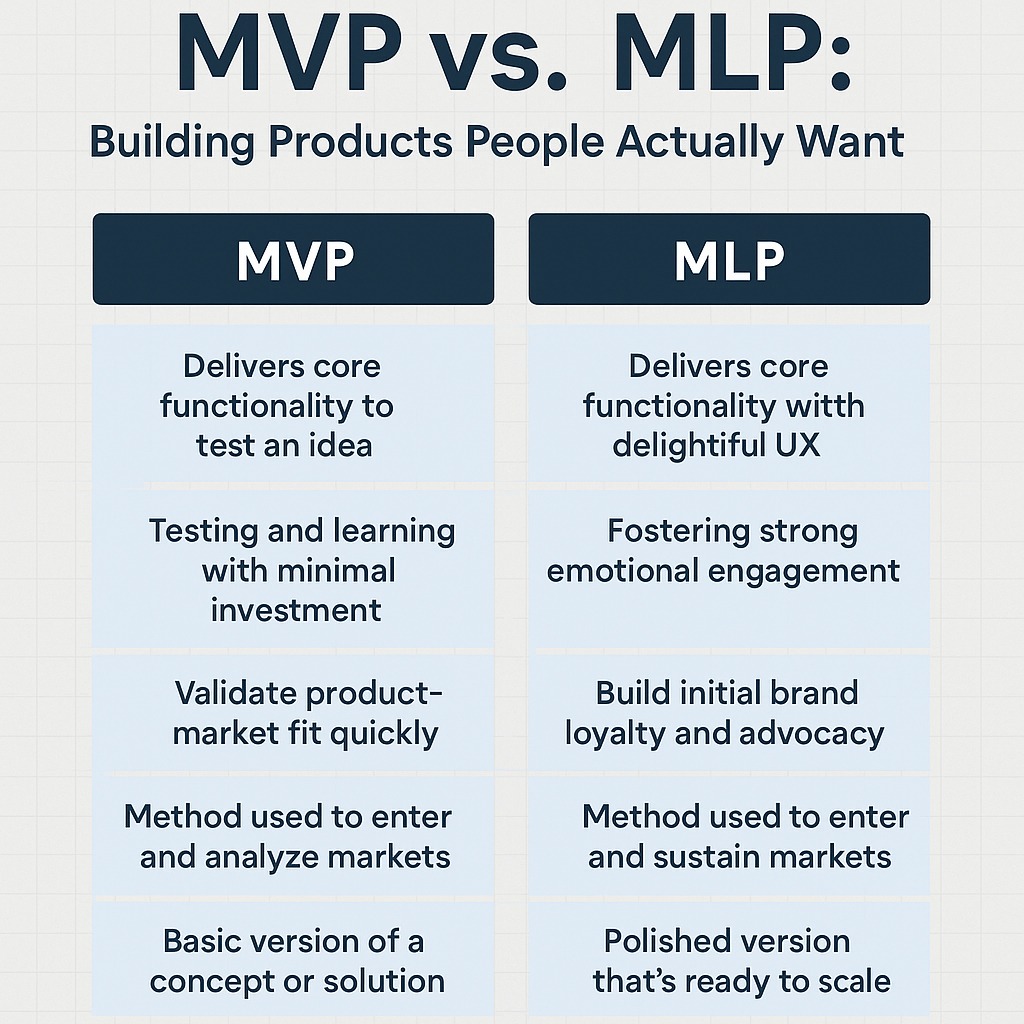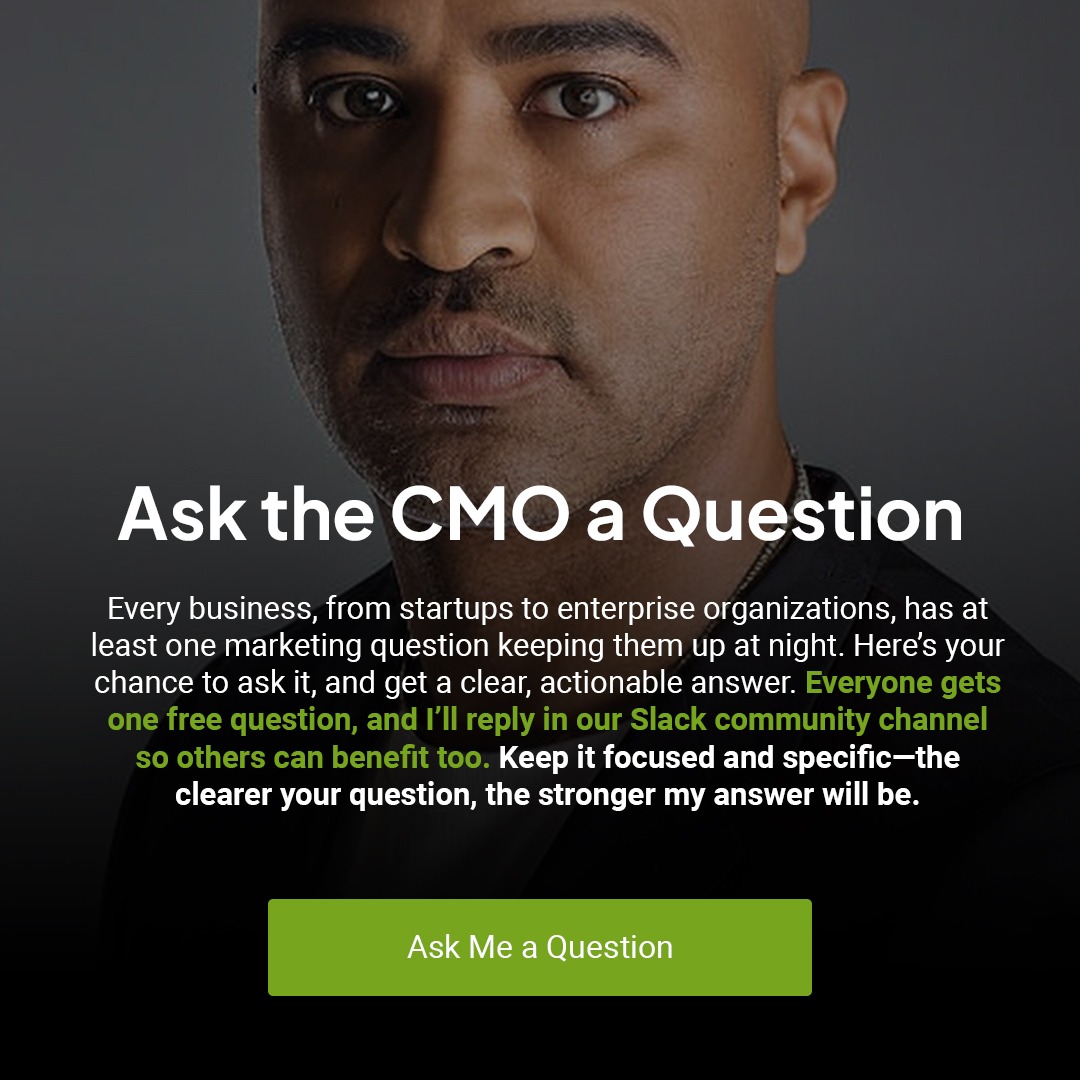The MVP—Minimum Viable Product—has become gospel in startup circles. Build fast, test fast, fail fast. But in today’s crowded market, viability alone won’t cut it. Customers have too many options. Attention is short. If your product doesn’t spark delight from the first click, you’ll lose users before you can learn anything. Enter the MLP: Minimum Lovable Product. It’s the evolution of MVP thinking, built not just to function, but to resonate.
In this article, we’ll explore why the MVP playbook is broken, how the MLP framework fixes it, and what you need to ship products that win hearts, not just wallets.
MVP: A Useful but Incomplete Concept
The MVP was born out of lean startup thinking: build the smallest possible version of your product that can deliver value. Its goal is speed to market and fast learning. However, MVPs often fall short in today’s experience-driven environment.
They’re frequently ugly, clunky, or incomplete, functioning enough to work but not well enough to excite. MVPs rarely reflect the emotional core of the product. Customers don’t want to be test subjects—they want to feel something. An MVP might tell you if someone will click. An MLP tells you why they’ll stay.
What Makes a Product Lovable?
A Minimum Lovable Product excels in a few key areas. It delivers core value clearly and fast. The primary benefit must be obvious and immediately accessible—users need to experience the “aha” moment without having to dig.
It feels polished where it matters. While perfection isn’t necessary, a thoughtful design signals care and quality, which instantly builds trust. MLPs also delight in small ways. Micro-interactions, smart defaults, and moments of joy all contribute to building emotional connection.
And finally, MLPs solve a real pain point. Lovable doesn’t mean superficial—it means solving something important with empathy and craft.
MVP vs. MLP: The Critical Differences
To understand the leap from MVP to MLP, let’s compare key elements:
An MVP’s goal is to test viability. It’s a low-friction way to validate assumptions and collect feedback. The MLP, by contrast, aims to create early love. It generates enthusiasm and advocacy, not just learning.
The user experience of an MVP is typically the bare minimum needed to function. The MLP, on the other hand, must be intuitive and enjoyable—every interaction matters. MVPs have low emotional appeal; MLPs intentionally inspire connection and delight.
Market reception also differs. MVPs are tolerated—they’re accepted as “first drafts.” MLPs are advocated for by users. And the type of feedback you receive shifts dramatically: MVPs generate functional feedback; MLPs spark passionate, qualitative responses.

Why MLPs Matter More Now
Today’s users expect quality from the start. They don’t separate “early” from “bad.” If your early product feels rushed or hollow, they won’t come back.
Products that get traction do so not just because they work, but because they make users feel something. That emotional lift—pride, ease, relief, delight—is what drives word-of-mouth, retention, and long-term growth.
Emotional connection from day one leads to stronger engagement metrics, more actionable user feedback, and easier investor conversations. When users love a product, they talk about it. When investors see users engaged, they lean in.
How to Build an MLP Without Losing Speed
Building an MLP doesn’t require perfection. It requires prioritization. Here’s how to focus on emotional impact without slowing your team:
Start by identifying the emotional outcome. What should your user feel after using the product—relief, joy, confidence? Define this upfront and build around it.
Then, prioritize experience over features. Rather than building five half-baked ideas, perfect one core flow. Focus on the moment when the user says, “This is exactly what I needed.” That single moment can drive retention and referrals.
Design for first impressions. The first 60 seconds matter. Simplify onboarding. Beautify the empty state. Guide users to success quickly, allowing them to build momentum rapidly.
Build feedback loops directly into the product. Don’t rely on surveys—embed light-touch ways to get input within the experience. Respond quickly and visibly to what users say.
And finally, cut what’s functional but forgettable. Just because something works doesn’t mean it belongs. Focus on what sparks love—or eliminate the noise to let love grow.
Case Study: From MVP Confusion to MLP Traction
A fintech startup launched a budgeting tool with smart functionality but weak UX. The core mechanics worked, but users weren’t sticking. They clicked around, got confused, and dropped off.
The team re-evaluated their MVP approach. They realized their onboarding didn’t teach, their interface lacked delight, and their tone felt clinical.
They rebuilt with MLP principles in mind. They focused on one feature—a visual daily spend tracker—and made it delightful. Animations rewarded progress. Clear, friendly copy made the experience feel like a coach, not a spreadsheet.
Engagement doubled. NPS jumped. And when investors tested the product, they finally understood the emotional hook.
Conclusion: Don’t Just Ship Fast—Ship Meaningful
The MVP mindset gave startups speed. But speed without connection is noise. If your product doesn’t create emotional lift, you won’t get real insights—or real traction. Your users don’t owe you their attention. You have to earn it. That means crafting an experience that resonates from the first interaction. Build something that solves a problem with empathy. Build something users talk about. Build something they’ll love—even if it’s small.
Keep Reading
Want more? Here are some other blog posts you might be interested in.
There is a certain kind of account that arrives wrapped in urgency and praise. They hire you because you are the ...
Entrepreneurship rewards the steady hand. Results surge, then stall, then surge again. If your energy, decision quality, and communication track those ...
Listen to your least happy customers or watch your revenue shrink... Many leadership teams claim to value their customers. Then they ...
For founders and growing companies
Get all the tips, stories and resources you didn’t know you needed – straight to your email!




